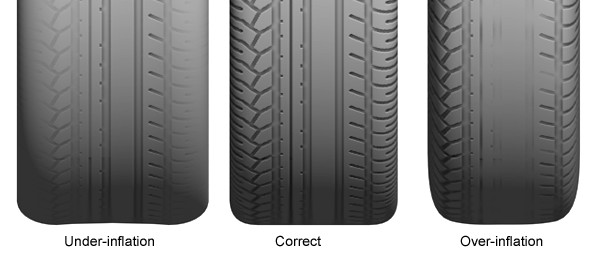Drivers usually know they ought to **drive defensively** to make roads safer. It’s a bit like playing chess on wheels, anticipating every move. Many also recognize that tires lacking air can be as sneaky as a pothole, causing trouble no matter how careful they are. The curious part? Studies show that properly inflated tires can improve gas mileage by up to 3%. Imagine the savings rolling in! Steering clear of danger and saving money sounds like a win-win. Let’s explore how making these small changes can lead to bigger rewards.
A recent survey by Schrader International, world leader in Tire Pressure Monitoring Systems (TPMS), discovered that around 42 percent of drivers consider the TPMS warning lights a “mystery.” While this result is down from a 2008 survey indicating that around 46 percent of drivers couldn’t identify the warning symbol implications.
Schrader, inventor of the special tire valve that monitors tire pressure on newer cars, estimates that over 104 million vehicles on the road in the US include a TPMS system. It’s vital that drivers become aware of the meaning of this warning light and take action when they see it. Oddly, even 10 percent of drivers admitted they purposely ignored this warning when they saw it.
National Highway Traffic Safety Administration (NHTSA)
The NHTSA offers its own statistics on how tire failure affects defensive driving efforts and safety. They estimate tire failure, from underinflation or worn out treads, cause around 11,000 accidents annually. This event volumeis troubling, since many of these crashes could be avoided.
Underinflated tires also cause additional problems, such as the following issues.
- Poor fuel economy, wasting an estimated 3.5 million gallons DAILY in the US.
- Dangerously longer stopping distances.
- Ineffective and sluggish handling reducing the safety of defensive driving techniques.
- Faster tire wear, leading to more failures and accidents.
The Solution
Motorists need to be aware of the meaning of the TPMS warning symbol, a yellow or red outlined tire including a visible exclamation point. This symbol indicates a flat or an air pressure loss in one or more tires. Awareness and understanding of the warning light is a critical first step.
Instead of depending on the traditional method of observation, drivers should heed this warning and take action to fix the problem. Ignoring this symbol could lead to serious accidents, along with costly repairs that could be avoided.
Assuming drivers don’t experience a tire blowout or flat, which obviously needs to be repaired immediately, motorists only need to check their tire pressure (or leave it to a professional) to correct underinflated tires. The optimal tire pressure is printed on tires, so drivers can check it themselves using a tire pressure gauge.
Why risk accidents, accelerated tire wear, wasted gasoline and overall safety by driving on underinflated tires. Even defensive driving on underinflated tires will cause one or more of these dangerous consequences. Do not become one of the NHTSA crash statistics.
If you see the TPMS warning light, check out your tire pressure as soon as possible. Don’t ignore this symbol. A fix is easy when you take action. Postponing action is expensive and dangerous. Get the most safety out of your defensive driving efforts.

 Live Chat
Live Chat






